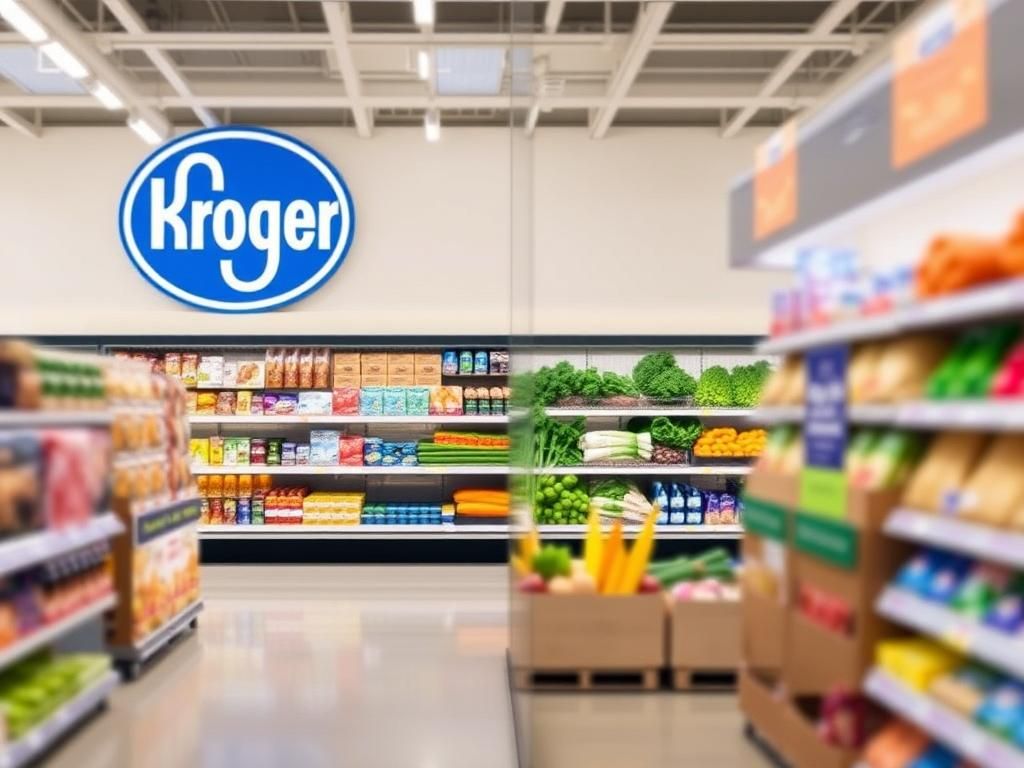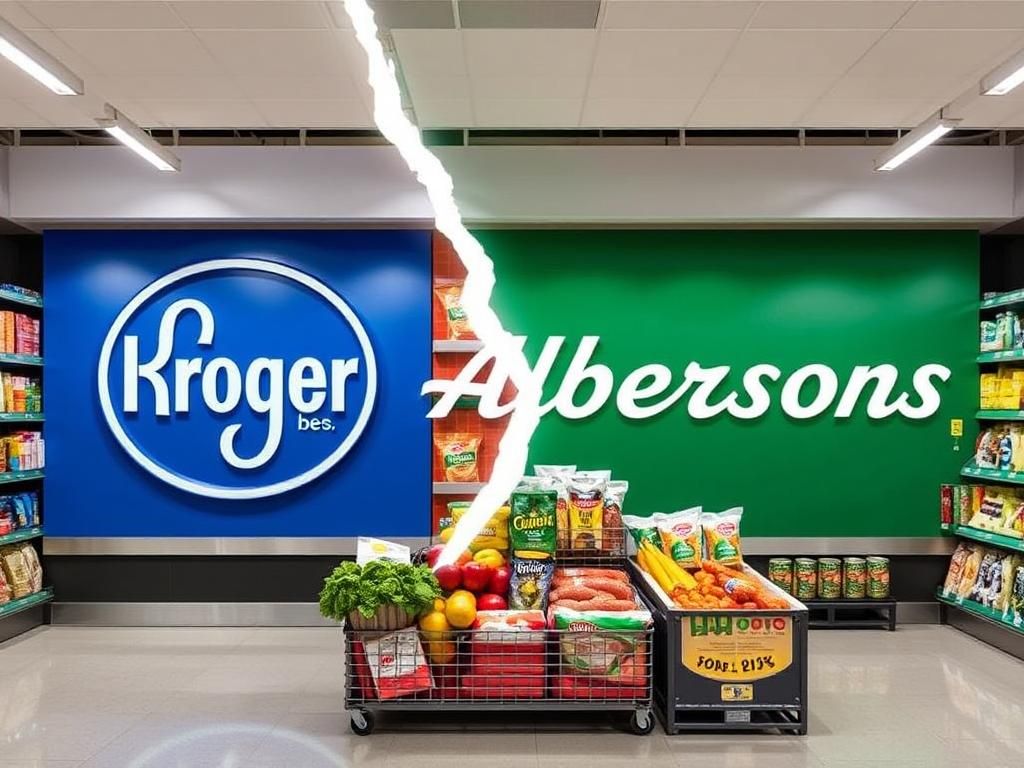The Kroger Albertsons Merger is not just a significant event in the grocery industry; it marks a pivotal moment that could reshape the way consumers shop for food and essentials in the United States. Kroger and Albertsons are two of America’s largest grocery chains, and their union has sparked discussions about market dynamics, competitive strategies, and consumer implications. This article explores the background of both companies, the details of the merger, its implications, regulatory challenges, and the future outlook faced by the combined entity.
Background of Kroger and Albertsons
Company Profiles
Kroger
Founded in 1883 in Cincinnati, Ohio, Kroger has grown to become one of the largest grocery chains in the United States, with over 2,700 stores across 35 states and the District of Columbia. Its revenue has consistently placed it among the top retailers globally, with sales exceeding $132 billion in recent years. Kroger has distinguished itself through its commitment to customer satisfaction, innovative services, and a diverse product lineup, including fresh produce, meat, pharmacy services, and more.
Albertsons
Albertsons was established in 1939 in Boise, Idaho, and has expanded its presence across the U.S. with around 2,200 locations. Like Kroger, Albertsons has focused on various grocery items, including premium and organic products. Its revenue has seen fluctuations, but it remains a strong competitor in the market, particularly known for its high-quality customer service and community involvement.
Industry Context
The grocery industry is a highly competitive landscape characterized by major players such as Walmart, Target, and Amazon. Kroger Albertsons Merger arrives at a time when the grocery sector faces significant shifts, including the rise of e-commerce, changes in consumer preferences for sustainable products, and the need for technological innovation in supply chain management. The trend towards greater online shopping channels, accelerated by the COVID-19 pandemic, has prompted traditional stores to adapt rapidly to remain relevant.
Details of the Merger
Announcement of the Merger
The ambitious Kroger Albertsons Merger was officially announced on October 14, 2022. In a joint press release, the companies outlined their commitment to enhancing the grocery shopping experience through combined resources and shared expertise. Following the announcement, reactions from stakeholders ranged from optimism about potential cost savings to apprehension about job security and consumer choice.
Financial Aspects
The total value of the merger is estimated at $24.6 billion, a figure that underscores the serious intentions behind the consolidation. Shareholders of both companies are closely examining stock implications; Kroger aims to finance the merger largely through cash and stock transactions. Additionally, the companies must navigate debt considerations that arise from merging significant operational structures and maintaining financial health post-merger.
Strategic Goals
There are several strategic goals driving the Kroger Albertsons Merger. First, the merger offers both companies increased *market share*, enabling entry into new markets. Second, the combined entity seeks to achieve *cost synergies* through shared resources and operational efficiencies. Finally, the merger promises enhanced *purchasing power*, allowing negotiation advantages with suppliers which, in turn, could lead to better pricing for consumers.

Implications of the Merger
Impact on Employees
One of the significant concerns surrounding the Kroger Albertsons Merger is the impact on employees. As companies merge, job security can come into question, leading to potential layoffs. However, there is also an opportunity for staff in the form of new roles and possibilities in larger operations. Kroger and Albertsons have committed to prioritizing employee welfare during the integration process, emphasizing training and retention where possible.
Effects on Consumers
For consumers, the Kroger Albertsons Merger may bring about changes in product offerings and pricing strategies. Some stores may be consolidated, resulting in closures or rebranding initiatives. Moreover, loyalty programs might see adjustments, as the two companies work toward a unified customer rewards system. Customers can anticipate an improved shopping experience as the two giants leverage their respective strengths.
Market Competition
The merger could significantly alter the competitive landscape, raising concerns among existing competitors. Industry giants such as Walmart and Amazon may respond with aggressive strategies to maintain their market positions. There is also the aspect of regulatory scrutiny; antitrust concerns can arise, prompting investigations to ascertain whether the merger might reduce competition too significantly.
Regulatory Approvals and Challenges
Antitrust Considerations
Antitrust laws are critical in addressing concerns surrounding the Kroger Albertsons Merger. Regulatory bodies, including the Federal Trade Commission (FTC) and Department of Justice (DOJ), will thoroughly review the merger to ensure it complies with existing legislation, which aims to preserve market competition. Possible challenges could arise if the consolidation is perceived to harm consumer welfare significantly.
Timeline for Approval
The estimated timeline for regulatory approval is anticipated to span several months, with critical milestones along the way. Major decisions and reviews are expected to occur within the first half of 2023, but the final approval could take longer if regulatory bodies require extensive investigations or additional information from either party.
Future Outlook

Post-Merger Integration
Effective integration post-merger is crucial for success. Key strategies include aligning corporate cultures, streamlining operations, and optimizing supply chains. Potential challenges exist, particularly in blending distinct corporate philosophies and team dynamics. Continuous communication with employees and stakeholders will be critical during this phase.
Long-term Market Positioning
Looking ahead, the Kroger Albertsons Merger could lead to a dominant market position, with projections suggesting a combined market share of over 15%. The focus on growth initiatives, including sustainability efforts and technological innovation, will likely influence long-term positioning in the grocery sector.
| Key Point | Kroger | Albertsons | Merger Implication |
|---|---|---|---|
| Founded | 1883 | 1939 | Strength in heritage |
| Store Count | 2,700+ | 2,200+ | Increased market reach |
| 2022 Revenue | $132 billion | $62 billion | Combined revenue advantage |
| Market Share Post-Merger | – | – | 15%+ |
FAQ
1. What is the main goal of the Kroger Albertsons Merger?
The merger aims to enhance market share, achieve cost synergies, and improve competitive positioning in the grocery sector.
2. How will this merger affect grocery prices?
While some fluctuations in prices may occur, the combined purchasing power of Kroger and Albertsons is expected to lead to better pricing for consumers over time.
3. Are there any job losses expected due to the merger?
There may be some overlapping positions that could lead to job losses; however, both companies are focusing on employee retention and restructuring to create new opportunities.
4. What regulatory bodies will review the merger?
The Federal Trade Commission (FTC) and the Department of Justice (DOJ) will evaluate the merger under existing antitrust laws to ensure competition is maintained.
5. When was the merger officially announced?
The Kroger Albertsons Merger was announced on October 14, 2022.
6. What future growth strategies might the combined company pursue?
The new entity may focus on sustainability initiatives, technological innovations, and expanding into new markets to solidify its competitive position.
7. Will loyalty programs change after the merger?
Yes, modifications to loyalty programs might occur as the two companies work towards a unified rewards system for customers.
8. How many locations will the merged company operate?
The merger will result in approximately 4,900 stores operating together under the new entity.
9. What challenges might arise during the post-merger integration?
Merging distinct corporate cultures and aligning operational strategies could pose significant challenges during integration.
10. Is there any expected timeline for the merger to be finalized?
The timeline for regulatory approval could take several months, with key milestones anticipated within the first half of 2023.